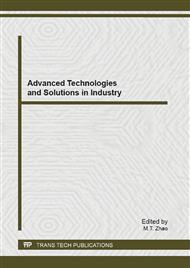p.763
p.768
p.772
p.775
p.781
p.786
p.790
p.794
p.798
Exploring Agent-Based Modeling for Emergency Logistics Collaborative Decision Making
Abstract:
Aiming at the requirements of urgency and dynamics in emergency logistics, this paper presents a multi-agent system (MAS) concept model for emergency logistics collaborative decision making. The suggested model includes three kinds of agents, i.e., role agent, function agent and assistant agent. Role agent excutes emergency logistics activities, function agent achieves the task requirements in every work phase and assistant agent helps organizing and visiting data. Two levels agent views serve as the basic skeleton of the MAS. Top level is the global decision-making view, which describes the task distribution process with multiple agents. Local level is the execution planning view, which simulates task executing process of the performer. Finally, an extended BDI agent structure model is proposed to help the implementation at application level.
Info:
Periodical:
Pages:
781-785
Citation:
Online since:
June 2013
Authors:
Price:
Сopyright:
© 2013 Trans Tech Publications Ltd. All Rights Reserved
Share:
Citation:


